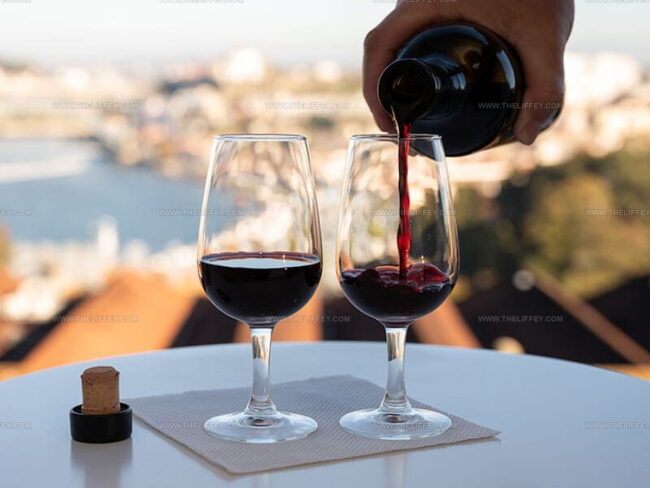What Does Port Wine Taste Like? Discover the Flavors in a Sip
Port wine, a beloved fortified wine from Portugal, has intrigued wine enthusiasts for centuries with its rich complexity and unique character.
Generations of winemakers in the douro valley have perfected this exceptional beverage through traditional methods passed down through family lines.
The depth and nuance of port wine make it far more than just another alcoholic drink on your shelf.
Countless wine lovers wonder about its distinctive qualities and what sets it apart from other wines.
Each variety offers a different sensory experience that goes beyond simple flavor descriptions.
Sommeliers and wine connoisseurs appreciate port's intricate layers and remarkable depth of character.
Understanding port wine requires more than a casual glance - it demands a deeper appreciation of its cultural heritage and sophisticated production techniques.
Unravel the mysteries of this extraordinary wine and learn why it continues to captivate palates around the world.
What Is Port Wine?
Port wine shines with its deep richness, making it a classic choice for dessert drinks.
Bottles come in red, white, rose, and an old-style called Tawny Port.
Wine shops carry basic Port, but serious collectors seek rare bottles worth hundreds of dollars.
Wine lovers appreciate this sweet red drink with deep historical roots.
Winemakers craft Port from special grape types like Touriga Franca, Touriga Nacional, Tinta Barroca, Tinto Co, and Tinta Roriz.
Different from standard wines, Port receives an extra boost of grape spirit during production, which increases its alcohol content and creates a unique flavor profile.
Port Wine Taste Guide
Port stands out from other fortified wines because of its special sweetness.
Regular wine-making methods like sulfites or filtration would halt fermentation, creating a weak but sweet drink.
Spirit alcohol helps make port both strong and sweet.
Different producers use unique techniques that change port's flavor.
Ruby port keeps its fruity character when stored in stainless steel containers for over 18 months.
This type offers rich flavors of blackberry, cherry, and plum, with hints of cinnamon and clove spices.
Wine newcomers can start enjoying port with a simple glass.
Many port wines shine with their deep red color.
Ruby port ranks as most common and budget-friendly, sporting a rich red shade that pairs wonderfully with chocolate or dark berries.
Tawny ports become more complex as they age.
Shoppers should know red port selections might cost more, so sampling different styles helps find personal favorites.
Port Wine Aging: Flavor Changes Over Time
Port wine gets its special taste from aging, and the longer it rests, the more its flavors change and deepen:
Different Kinds of Port Wine
Port vs. Sherry Differences
Wine styles start with their specific production regions.
Port comes from Portugal's Douro Valley.
Spanish Sherry originates in Andalusia near Jerez de la Frontera, which British folks call Sherry.
How Port Wine Is Made
Winemakers carefully pick grapes by hand when crafting port wine.
Manual harvesting stops early fermentation and keeps more sugar inside, which creates a sweet drink with strong alcohol levels.
Makers then store wine in wooden barrels for less than two years.
Later, they might mix different vintages or continue aging the wine.
Different grape types bring out special flavors like caramel, chocolate, raspberry, and cinnamon.
Port wine offers incredible flavor variety from Portuguese vineyards.
Wineries in this region produce unique tastes that surprise wine fans.
Drinkers can find something matching their preferences, whether they enjoy sweet or complex wines.
Understanding port wine's flavor isn't straightforward.
Wine experts consider it a sensory journey with countless possibilities.
Each sip tells a different story worth experiencing.
Foods That Go With Port Wine
Port wine brings sweetness and delightful flavors that complement specific dishes.
Sipping this wine after meals remains a classic choice, but it also matches wonderfully with strong blue cheese, salty nuts, and smoky meats.
Chocolate and caramel desserts become even more special when paired with Port.
Hosting dinner guests requires careful wine serving techniques.
Serving Port at room temperature ensures the best experience.
Temperatures that are too high or low might create uncomfortable sensations for guests.
Letting the wine sit for 10 minutes after opening helps release its full flavor profile.
Is Port Wine Expensive or Affordable?
Port wine prices depend on several key elements.
Different port selections range from budget-friendly to high-end choices.
Specific details like vintage year, place of origin, and port variety play significant roles in setting wine costs.
Wine enthusiasts can explore multiple port styles.
Port offers a delightful drinking experience with complex taste notes.
Sampling different port varieties helps you discover personal favorites.




John Conley
Founder & Culinary Storyteller
Expertise
Recipe Development, Culinary Writing, Home Cooking Techniques, Seasonal Ingredient Utilization
Education
Lane Community College, Eugene, OR
Certificate in Culinary Arts
Focused on foundational cooking techniques, kitchen safety, and menu planning.
Gotham Writers Workshop, New York, NY
Course in Food Writing
Explored the art of crafting engaging culinary narratives and recipe development.
John grew up where food meant connection: big bowls, warm kitchens, and meals that told a story. After earning his Certificate in Culinary Arts from Lane Community College and diving deep into food writing at Gotham Writers Workshop, he found his calling: turning everyday recipes into something worth savoring.
At The Liffey, John’s focus is all about crafting dishes that feel easy, honest, and full of heart.